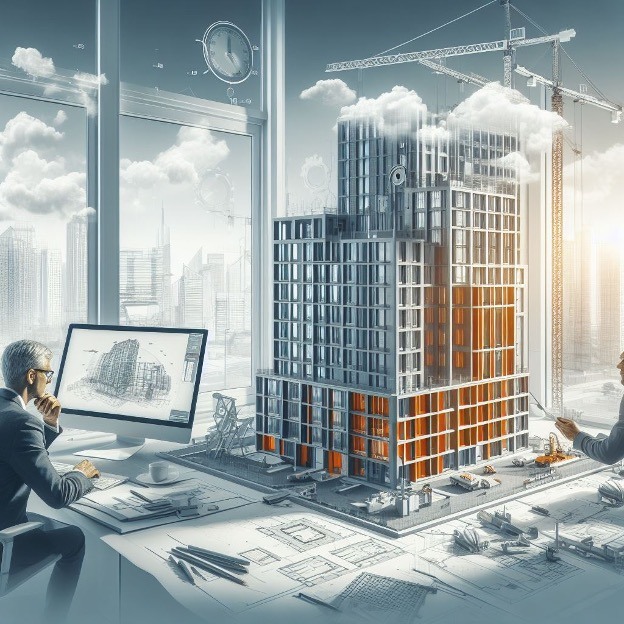
By: Ted Mort, Chief Operating Officer, Cadnetics
You’ve read the DBIA VDC Primer and Position Statement and subscribed to the “people first approach” to Virtual Design & Construction. Now, your team is at the forefront of innovation, constantly pursuing safer, more efficient and less wasteful ways to build. But did you know your efforts could also lead to substantial tax savings for your company through Research and Development Tax Credits? I found out about this credit a few years ago and was surprised at the inconsistent level of awareness in our industry. Let’s look at what this credit is, why it’s important, who’s a candidate and what potential applications exist.
What is the R&D tax credit?
The Research and Development (R&D) Tax Credit is a government incentive aimed at encouraging innovation and technological advancement within various industries. Established in the United States in 1981, the R&D Tax Credit was created to foster economic growth and global competitiveness by incentivizing businesses to invest in research and development.
By offering financial relief, governments encourage companies to undertake exploratory ventures, driving progress in diverse fields such as technology, engineering, pharmaceuticals and manufacturing. The credit supports the development of new products, processes and technologies, leading to job creation, increased productivity and enhanced global competitiveness. Ultimately, the R&D Tax Credit serves as a catalyst for innovation and helps ensure that our design-build processes continue to evolve.
Why is it important?
The credit allows eligible businesses to offset a portion of their research and development expenses against their tax liability. This means companies engaging in qualified research activities can reduce their tax burden, freeing up funds for further innovation and growth.
Credits like the R&D Tax Credit could provide support for design-build ventures into future-forward technologies and processes otherwise not financially viable. The collaborative nature of design-build makes it well-situated for exploring technologies and identifying those that improve efficiency, for instance, in their VDC processes. Being able to pursue new and creative ways to design and construct the built environment leads to better project outcomes that are poised for the future of the industry.
The pursuit of a quantifiable return on investment from VDC teams has been a topic of conversation for years. Through these explorations, we’ve gotten better at capturing both tangible and intangible values. The application of the R&D Tax Credit puts capital back into the company and is another tool to use when balancing the financial impact of your VDC team.

So, how does it apply to the design-build community?
In design-build contracting –– where seamless collaboration between designers and builders is paramount –– leveraging R&D tax credits becomes especially pertinent. Design-build projects that include VDC efforts inherently involve extensive problem-solving, experimentation and innovation. The synergy between design and construction teams often leads to the development of novel solutions/workflows and cutting-edge techniques. These collaborative efforts align very well with the IRS criteria for R&D tax credits.
Whether it’s refining architectural designs to enhance functionality or experimenting with construction methodologies to optimize efficiency, the iterative nature of design-build projects frequently aligns with qualifications for these credits. By recognizing and documenting these innovative endeavors within the design-build project delivery method, companies can not only foster a culture of continuous improvement but also significantly reduce their tax liabilities, thereby bolstering their financial health and competitiveness in the industry.
What types of efforts are applicable?
An expert in the tax credit can guide you through this process but as an example, here are some of the efforts that may be considered as qualified research expenses (QREs):
- Development of Virtual Models: Creating intricate virtual models of construction projects, including 3D visualizations, simulations and virtual walkthroughs.
- Simulation and Analysis: Utilizing simulation software to improve sustainability, predict project outcomes, analyze construction sequences, simulate different environmental conditions or optimize resources.
- Collaborative Technologies: Developing or enhancing collaborative platforms that facilitate real-time communication and data sharing among project stakeholders. This type of effort is on display during coordination meetings, where the Design-Build team members gather, taking the whole team approach to evaluate system routing, clash avoidance and constructability.
- Integration of Technologies: Experimenting with and integrating emerging technologies like augmented reality (AR), virtual reality (VR) or Internet of Things (IoT) devices into construction processes. Activities that explore the practical applications and integration challenges of these technologies may be eligible.
- Process Optimization: Conducting research to improve existing VDC processes, such as developing algorithms to automate repetitive tasks, optimizing workflows or enhancing the interoperability of different software systems has the potential to qualify.
- Quality Control Innovations: Developing innovative methods for quality control, error detection or risk mitigation within virtual construction environments.
- Some qualifying expenses could be wages, supplies and contract research.
If this is something your team hasn’t been taking advantage of, they deserve to check it out –– there may be significant tax savings waiting. If you are interested in a referral to a consultant, we’re happy to point you in the right direction, contact Cadnetics and we’ll make an introduction.
Disclaimer from Cadnetics: This advice is solely based on opinions and is not advisement. We have been on the recipient side of the R&D tax credit and have a general understanding of it, but we have always consulted with experts who specialize in this tax credit for the execution. Our team at Cadnetics provides support to designers and builders through services like modeling, detailing, reality capture and similar. There are groups who specialize in applying this tax credit within the design-build industry and we’d be happy to make an introduction.

